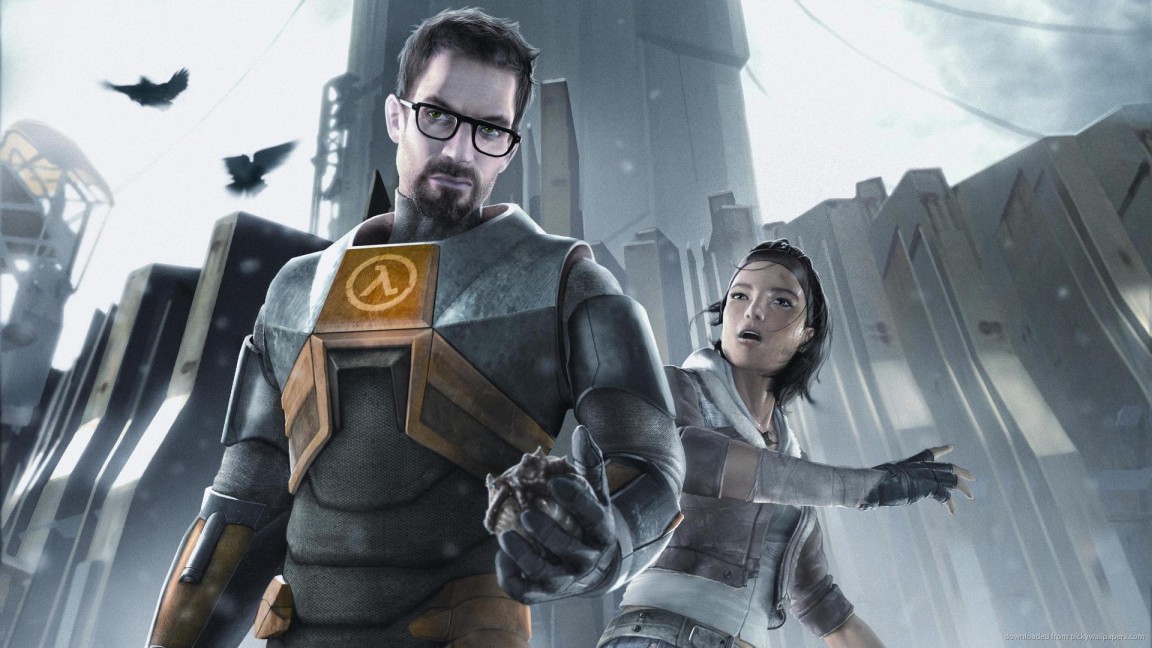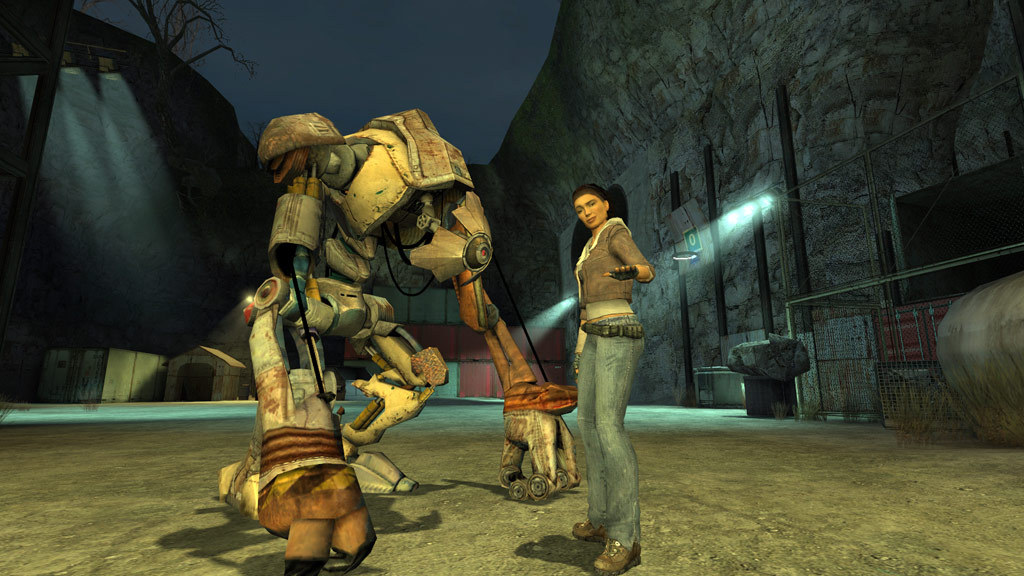“This is the one unmissable game,” Jim Rossignol wrote in the closing paragraph of his Half-Life 2 review. “It’s time to get that cutting-edge PC system. Sell your grandmother, remortgage the cat, do whatever you have to do.” The Signal From Tölva designer still remembers entering a tiny cubicle office in Seattle as the first journalist to play Valve’s opus, half a decade in the making. A 20-something acolyte of the series, he was intoxicated, hyperbolically overawed. But he wasn’t wrong. “It is one of those works of art that you understand are more like events than things,” he says now. “Unrepeatable happenings in space-time, thanks to a great conjunction of people and circumstance.”
Why hasn’t there been a Half-Life 3? Rossignol refers to Joseph Heller, who was once asked why he’d written nothing else as good as Catch-22: “Who has?” “Then I imagine the task facing those developers who must attach their names to a sequel like Half-Life 3,” Rossignol says. “Catch-22, indeed.” Chris Remo is one of those developers now working at Valve. While Half-Life 2 was in development, he consumed the words of Rossignol and his colleagues in PC Gamer. And when it came out, he spent two evenings at a cyber-cafe playing through the campaign. “Games are often overstuffed with content, but the Half-Life games demonstrate that restraint can actually punch much bigger than excess and bombast if all the tonal elements of the experience are working together towards a shared goal,” Remo says. “Once you do decide to loosen the restraints, as with the gravity gun section of Half-Life 2, the payoff is much more powerful and surprising.” The minimalism of Half-Life 2 appealed to Harvey Smith, too, then fresh from directing the sequel to Deus Ex. “Deus Ex is a game about murky situations, where many solutions and partial solutions might be viable,” he says. “The game design in Half-Life 2 has a clarity, where you almost always know what to do in order to solve your problem, which results in a very satisfying mental state as you play; you don’t just feel power and purpose, you feel freed from uncertainty.”
The setting of City 17 proved the perfect partner to this philosophy, built from clean lines that conveyed a cruel alien regime without waste. Its art designer, Viktor Antonov, later worked with Smith on Dishonored - where you can see a similar layering of steel atop the dwellings of Dunwall, effective shorthand for a ruler suffocating their people. “The environments in Half-Life 2 are economical from a level design perspective,” Smith says. “Each level both feels like a coherent, plausible narrative space, but also messages its nature as a problem to solve. I often feel like simply playing it made me a better game designer.” Remo went on to contribute to Firewatch, the innovative adventure game in which a fire lookout has only the voice on the other end of his radio for company. Like Half-Life 2, it stuck resolutely to its first-person perspective. The secrets of Shoshone National Forest unfolded slowly before the eyes of its protagonist. “Maintaining that integrity of the player physically embodying the character was very important, and that was one of many lessons we learned from Half-Life,” he says. “Even though it’s primarily a shooter, dropping you into the quiet but very oppressive atmosphere of City 17 right from the start, before any action gets going, was such a confident move.” Valve’s control over Half-Life 2’s game world was as total as the Combine’s. For some budding developers, the taut story, physics puzzles and scripted vehicle segments were creatively freeing. Bartosz ‘Glova’ Kulon, the lead programmer responsible for parkour at Techland, thinks Valve’s ambition is ultimately to thank for Dying Light. “It showed us that we could and should go wild, and create things previously unimaginable in the genre,” he says.
For Rossignol, though, Half-Life’s linearity became something to rebel against. “The trick was always momentum,” he says. “As long as you keep being propelled along by events, the game sings. Stop, however, and the world does nothing more. Once I realised that, there was a dissonance to it.” It was this understanding that drove Rossignol towards simulationist games instead, and further to build his own, like Sir, You Are Being Hunted. Its twisted British countryside belongs to aristocratic robots and their AI routines, not an all-powerful designer. “I came to value worlds where the urgency and story is not sleight of hand,” he says, “but the product of a pocket world living its life.”
Remo, by contrast, has ended up working at Valve on Half-Life: Alyx. “There’s a bizarre lack of ego,” he says. “It’s really appreciated by someone like me, who’s come in much more recently after knowing the Half-Life series since I was in high school. I’m constantly amazed by the level of talent and generosity in every corner of this place.” Bram Eulaers, a 3D Artist at Valve, has made a similar pilgrimage. “Being a Half-Life 2 fan has helped quite a bit with regard to knowing the story, and having done tons of Half-Life 2 modding back in the days helped me understand the design philosophies,” he says. “Joining Valve has felt more like coming home than going on a new journey.” Those who now work alongside members of the Half-Life 2 development team have succeeded in demythologising it, having looked behind the curtain. But for others, its greatness remains intimidating, blinding even. “As a player I basked in it,” Rossignol says. “As a writer and designer I retreated, blinking, from its burning brightness. I could never go there.” Half Life: Alyx is due for release on March 23 through Steam.

